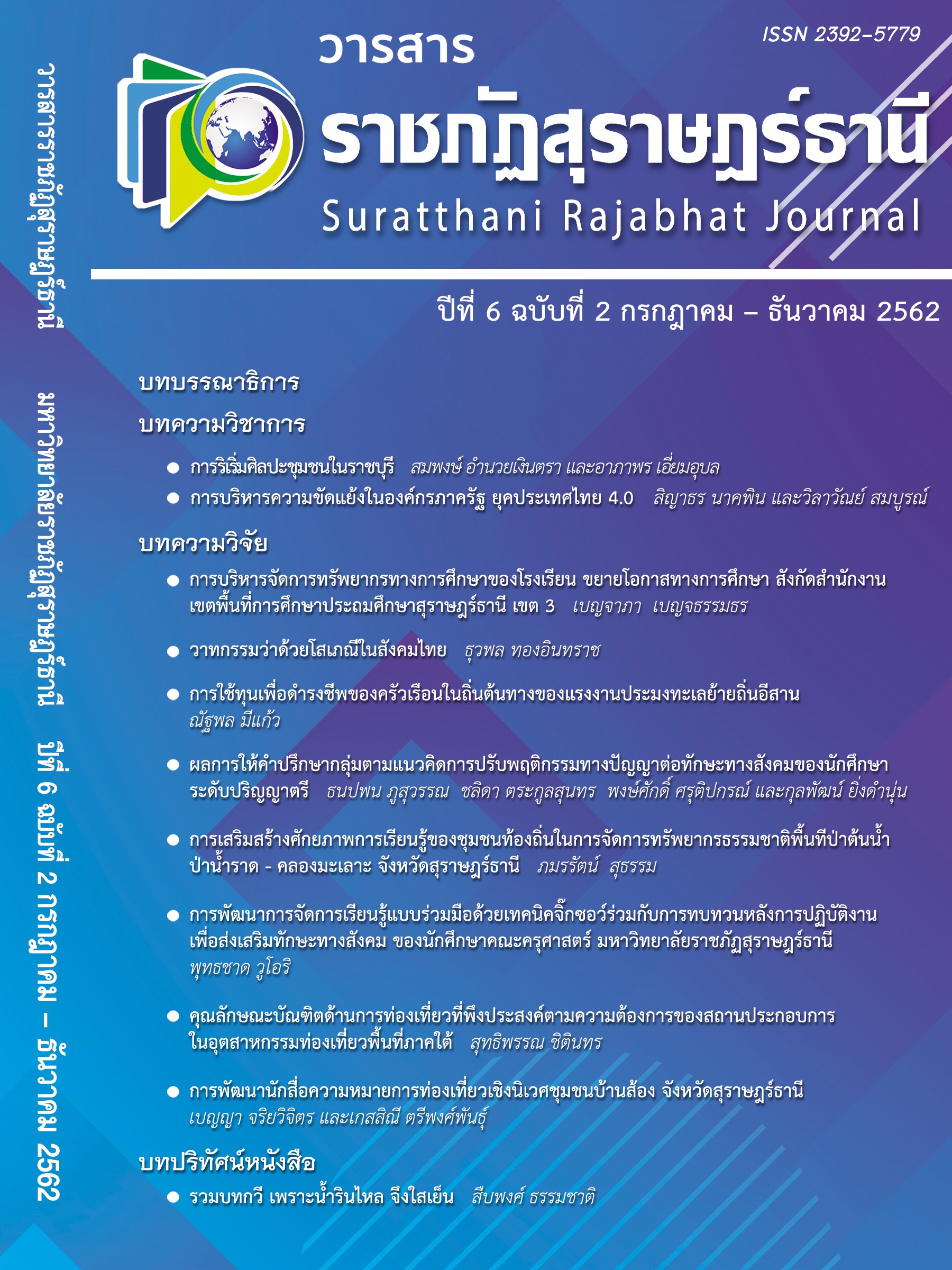The Development of Cooperative Learning using Jigsaw Technique Cooperative with After Action Review to Enhance Social Skills of Student Teachers in Suratthani Rajabhat University
Main Article Content
Abstract
The objectives of the research were: 1) to develop the cooperative learning using Jigsaw Technique cooperative with After Action Review to enhance social skills of student teachers, who enrolled in the Psychology for Teacher subject, with the standard quality of 80/80; 2) to study an effectiveness index of learning activity management; and 3) to compare the student teachers’ social skills between before and after applying cooperative learning using Jigsaw Technique cooperative with After Action Review.
The sampling was the students in the second semester of academic year 2015 from the Faculty of Education majoring English language, Suratthani Rajabhat University. They registered in the Psychology for Teachers Subject (EPY0301) for 1 section, with 25 students. The sampling was drawn using a simple random sampling method and was quasi-experimental with a one group pretest-posttest design. The whole activity lasted for 3 hours repeated 5 separate times. The research tools consisted of: 1) 5 models of the cooperative learning using Jigsaw Technique cooperative with After Action Review; 2) 50 marks of the pretest and posttest for the effectiveness index of learning activity management; and 3) a social skill test. The Mann-Whitney Test was used for data analysis.
- The efficiency of cooperative learning using Jigsaw Technique with After Action Review to enhance Social Skills of student teachers in Psychology for Teachers subject was 83.04/83.20,
- The effectiveness index of learning activity management of the students after cooperative learning using Jigsaw Technique with After Action Review in Psychology for Teachers subject was 0.6601,
- After cooperative learning using Jigsaw Technique with After Action Review, the students obtained higher social skills than before at the 0.05 significance level.


